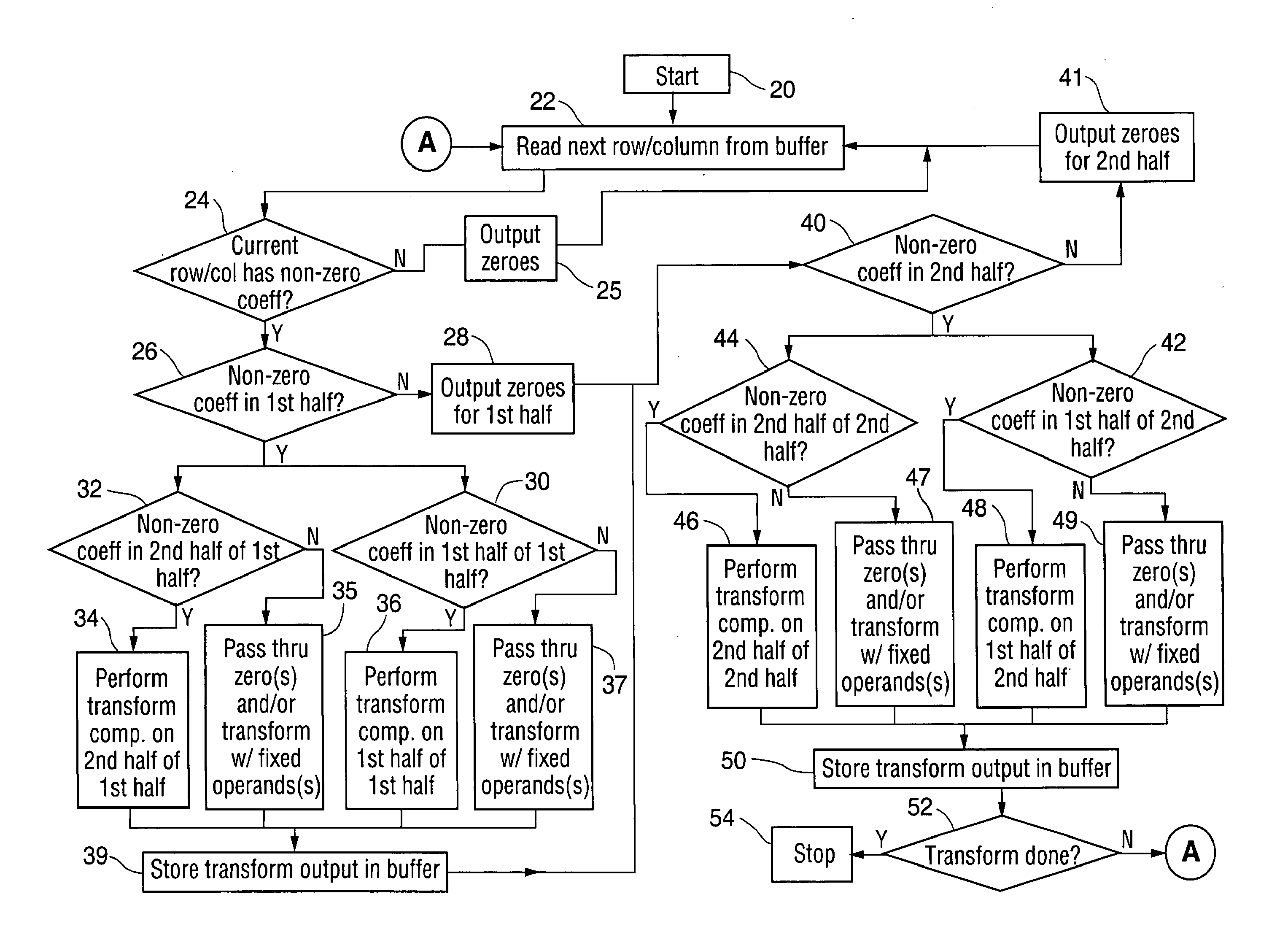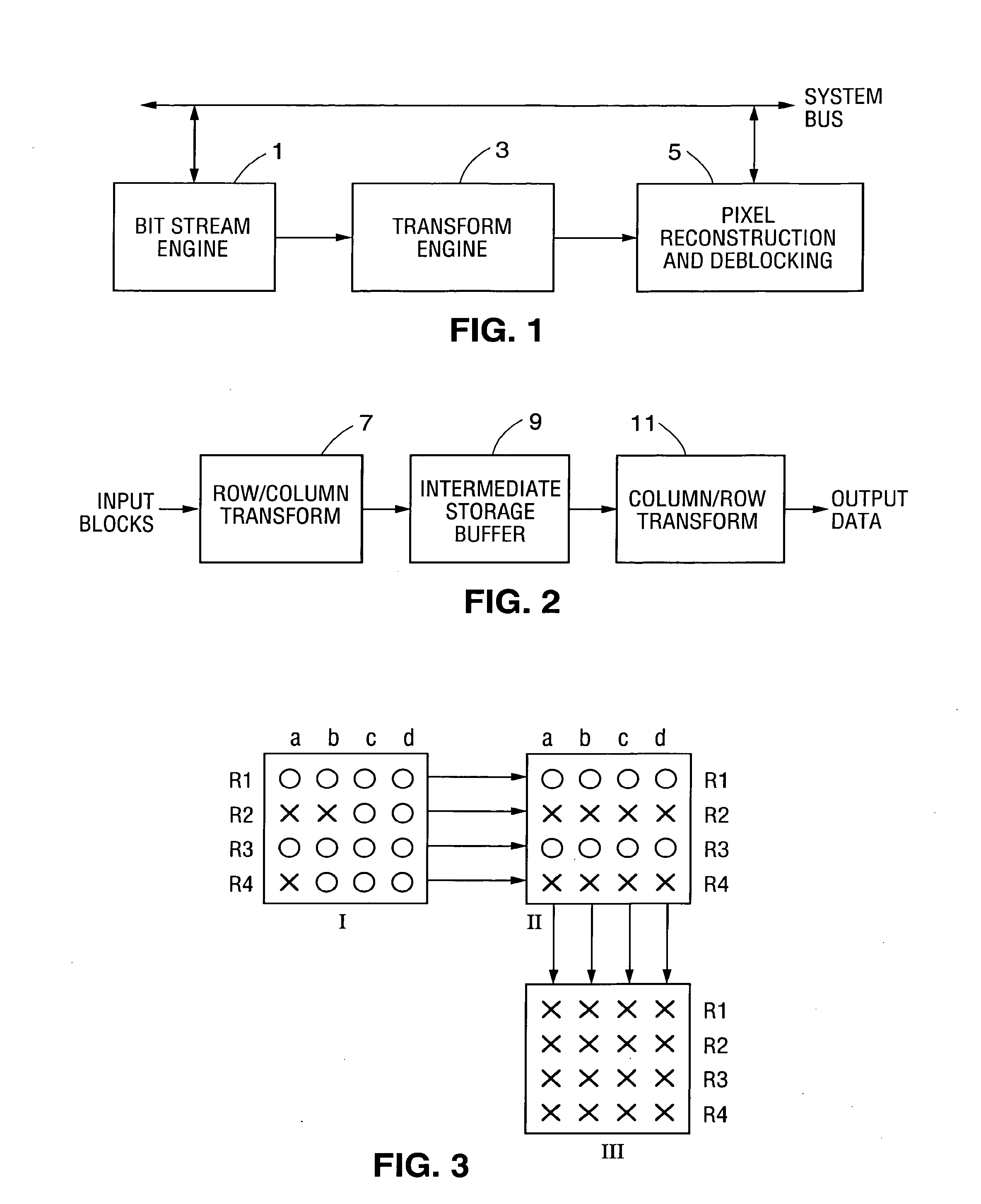Method and system for performing two-dimensional transform on data value array with reduced power consumption
- Summary
- Abstract
- Description
- Claims
- Application Information
AI Technical Summary
Benefits of technology
Problems solved by technology
Method used
Image
Examples
Embodiment Construction
[0054]Embodiments of the inventive system will be described with reference to FIGS. 1, 2, 3, 4, 5, and 6.
[0055]FIG. 1 is a system level block diagram of a pipelined video decoding system including bitstream engine 1, transform engine 3 (which can be implemented in accordance the present invention), and pixel reconstruction engine 5, connected along a system bus as shown. Bitstream engine 1 receives encoded video data that comprise processed blocks of frequency domain coefficients, said frequency domain coefficients having been generated by performing a 2D transform (e.g., a two-dimensional DCT) on blocks of video pixels. Bitstream engine 1 processes the encoded video data, typically by performing unpacking and inverse quantization thereon, and asserts the resulting sequence of blocks of processed frequency domain coefficients to transform engine 3. Transform engine 3 performs a 2D inverse transformation on each block of the sequence to generate blocks of partially decoded video pixe...
PUM
 Login to View More
Login to View More Abstract
Description
Claims
Application Information
 Login to View More
Login to View More - R&D
- Intellectual Property
- Life Sciences
- Materials
- Tech Scout
- Unparalleled Data Quality
- Higher Quality Content
- 60% Fewer Hallucinations
Browse by: Latest US Patents, China's latest patents, Technical Efficacy Thesaurus, Application Domain, Technology Topic, Popular Technical Reports.
© 2025 PatSnap. All rights reserved.Legal|Privacy policy|Modern Slavery Act Transparency Statement|Sitemap|About US| Contact US: help@patsnap.com



